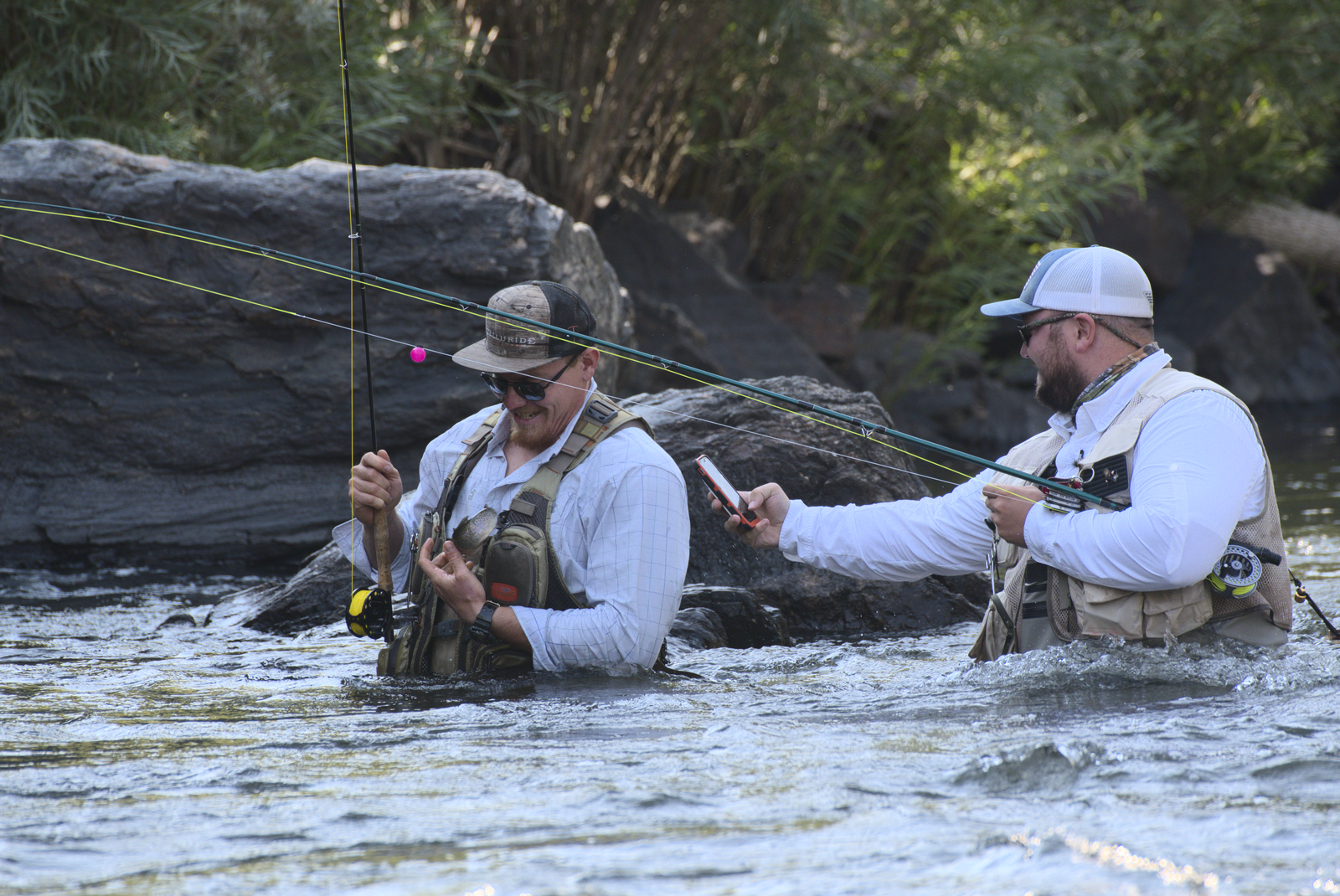| COLORADO |
By: Photojournalist Hawk Buckman
Embark on an extraordinary adventure to Fort Collins, Colorado, where the majestic Cache la Poudre River gracefully winds its way through the heart of the city.
The Cache la Poudre River in northern Colorado is more than a scenic waterway—it’s a river shaped by frontier history, rugged canyons, and vital water rights. Named by French trappers who once cached gunpowder along its banks, the Cache la Poudre flows from the Rocky Mountain peaks through dramatic canyons into the Colorado plains.
Recognized as Colorado’s only federally designated Wild and Scenic River, it has long been the lifeblood of nearby communities, providing irrigation, recreation, and a living link to the state’s past. Today, visitors come to fish its clear waters, raft thrilling rapids, and hike trails that trace the same paths as early settlers and explorers. The Cache la Poudre River is both a natural wonder and a historical landmark, connecting outdoor adventure with Colorado’s deep cultural heritage.
Trails West Magazine is venturing into the picturesque landscapes of Northern Colorado, embarking on an exciting expedition that begins with a captivating exploration of the Cache la Poudre River Canyon. As we embark on this remarkable journey, we delve into the fascinating history and natural wonders that define this renowned waterway.
Our expedition into the Cache la Poudre River Canyon commences as we traverse the rugged terrain, blessed with awe-inspiring vistas and rugged cliffs that stand as sentinels to the passage of time. As we meander along the canyon’s winding path, we are greeted by the melodious harmony of the rushing river, which echoes through the towering walls, creating an enchanting symphony of nature’s marvels.
The Cache la Poudre River holds a profound significance, not only for its stunning beauty but also for its pivotal role throughout history. Known as the “Poudre River” by locals, it has witnessed the footsteps of early explorers, trappers, and settlers who sought refuge and sustenance in its embrace. The river was named “Cache la Poudre,” meaning “hide the powder” in French, as legend has it that French trappers concealed their gunpowder along its banks to safeguard it from a Native American raid.
As we delve deeper into the history of this river, we uncover tales of the fur trade era and the courageous men who navigated its treacherous waters. The Poudre River served as a vital lifeline for trapping expeditions, providing a means for transporting furs and supplies. Trappers and traders braved the river’s rapids and dangerous currents, leaving an indelible mark on the region’s heritage.
Beyond its historical significance, the Cache la Poudre River captivates with its abundant wildlife and diverse ecosystem. Along its banks, the riparian habitat provides sanctuary to many bird species, including the majestic bald eagle and the elusive great blue heron. Wildlife enthusiasts will be enthralled by the chance to spot mule deer, black bears, and even elusive mountain lions that call this area home.
Additionally, the river boasts a thriving fish population, making it a prime destination for anglers seeking to reel in rainbow trout, brown trout, and cutthroat trout. Casting a line into the crystal-clear waters of the Poudre River is an opportunity for sport and a serene and meditative experience, allowing one to connect with the natural world profoundly.
As we continue our expedition through the Cache la Poudre River Canyon, we witness the harmonious blend of nature’s grandeur and human ingenuity. A historic tunnel, Mishawaka, three miles west of Poudre Park, serves as a testament that has allowed connectivity and facilitated the region’s growth.
Trails West Magazine is honored to be your guide as we embark on this captivating journey through the Cache la Poudre River Canyon. Join us as we unravel the layers of history, immerse ourselves in the awe-inspiring landscapes, and discover the hidden treasures that await along the banks of this majestic river.
| THE RIVER RUNS THROUGH IT
The Cache la Poudre River is prominent in Colorado, United States. It is located in the northern (NoCo) part of the state and flows through the scenic Poudre Canyon, west of the city of Fort Collins. The river is approximately 76 miles (122 kilometers) long and is one of the few designated “Wild and Scenic” rivers in Colorado.
The name “Cache la Poudre” translates to “hide the powder” in French. According to legend, in the early 19th century, French trappers were caught in a snowstorm and had to bury their gunpowder (poudre) along the river to lighten their load and survive. The river eventually became known as the Cache la Poudre River.
The Cache la Poudre River originates in the northern Front Range of the Rocky Mountains and is fed by snowmelt and runoff from the surrounding peaks. It flows through the Roosevelt National Forest and offers breathtaking views of rugged canyons, steep cliffs, and dense forests. The river’s elevation ranges from around 5,000 feet (1,500 meters) to over 14,000 feet (4,300 meters) at its headwaters in the alpine tundra.
The river is known for its excellent recreational opportunities, especially for whitewater rafting and fly fishing. The upper reaches of the Cache la Poudre River offer challenging rapids and attract both beginner and experienced rafters. The lower section of the river provides more relaxed float trips, suitable for families and those seeking a calmer experience.
Fly-fishing enthusiasts are drawn to the Cache la Poudre River for its abundance of trout, including brown trout, rainbow trout, and cutthroat trout. The river’s clean, cold waters support a healthy fish population, making it a popular destination for anglers. There are numerous access points and fishing spots along the river, offering a variety of fishing experiences.

Apart from recreational activities, the Cache la Poudre is a vital water source for the region’s agricultural irrigation and municipal supplies. It is also home to diverse wildlife, including elk, deer, moose, eagles, and other bird species.
The Cache la Poudre and its surrounding areas are protected and managed by several agencies, including the U.S. Forest Service and Colorado Parks and Wildlife, to preserve its natural beauty and ecological integrity. It is a precious natural resource in Colorado and provides a serene and picturesque setting for outdoor enthusiasts and nature lovers to explore and enjoy.
| MORE INFORMATION
State of Colorado
National Parks Service
Colorado Fish and Wildlife















